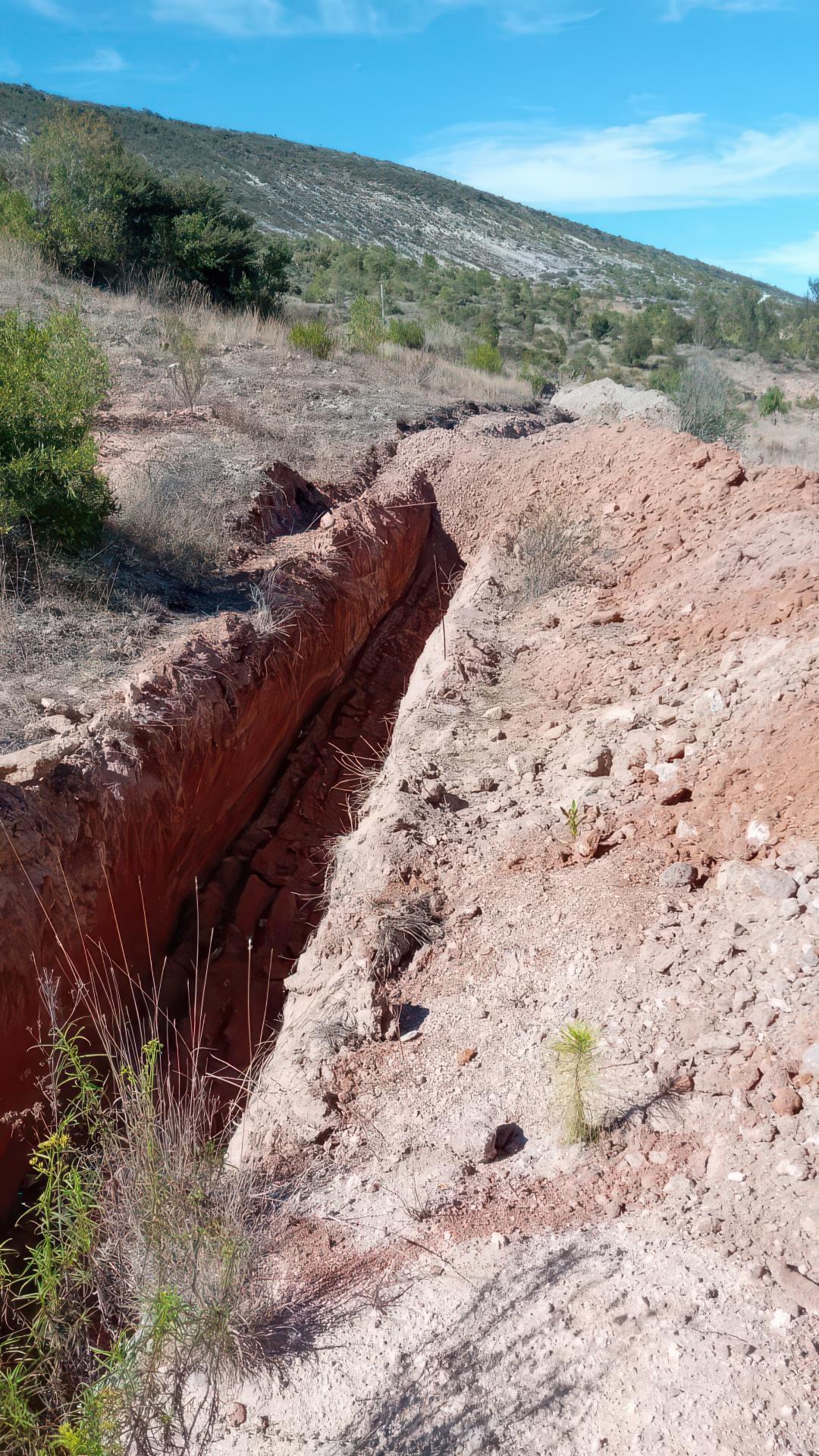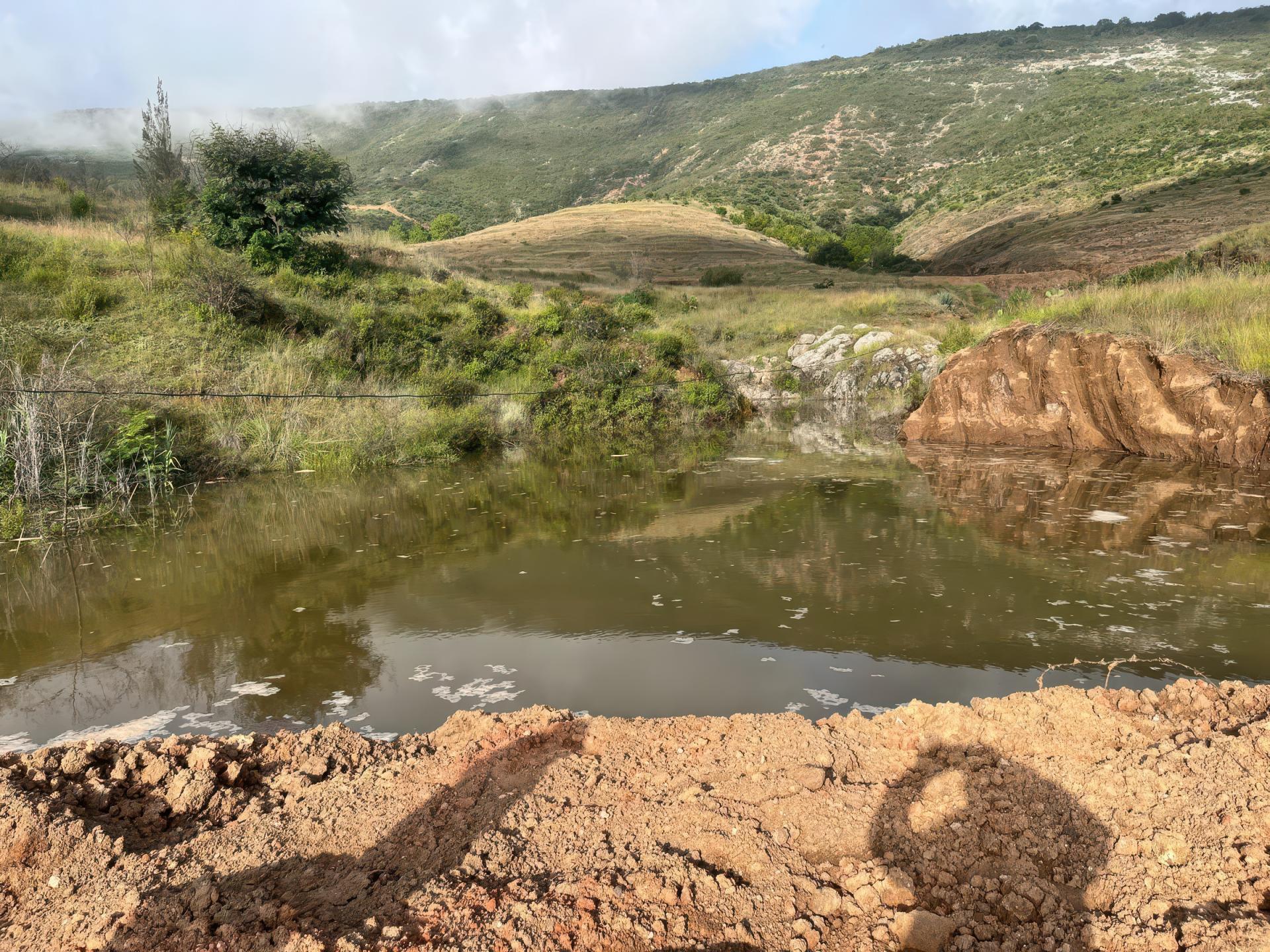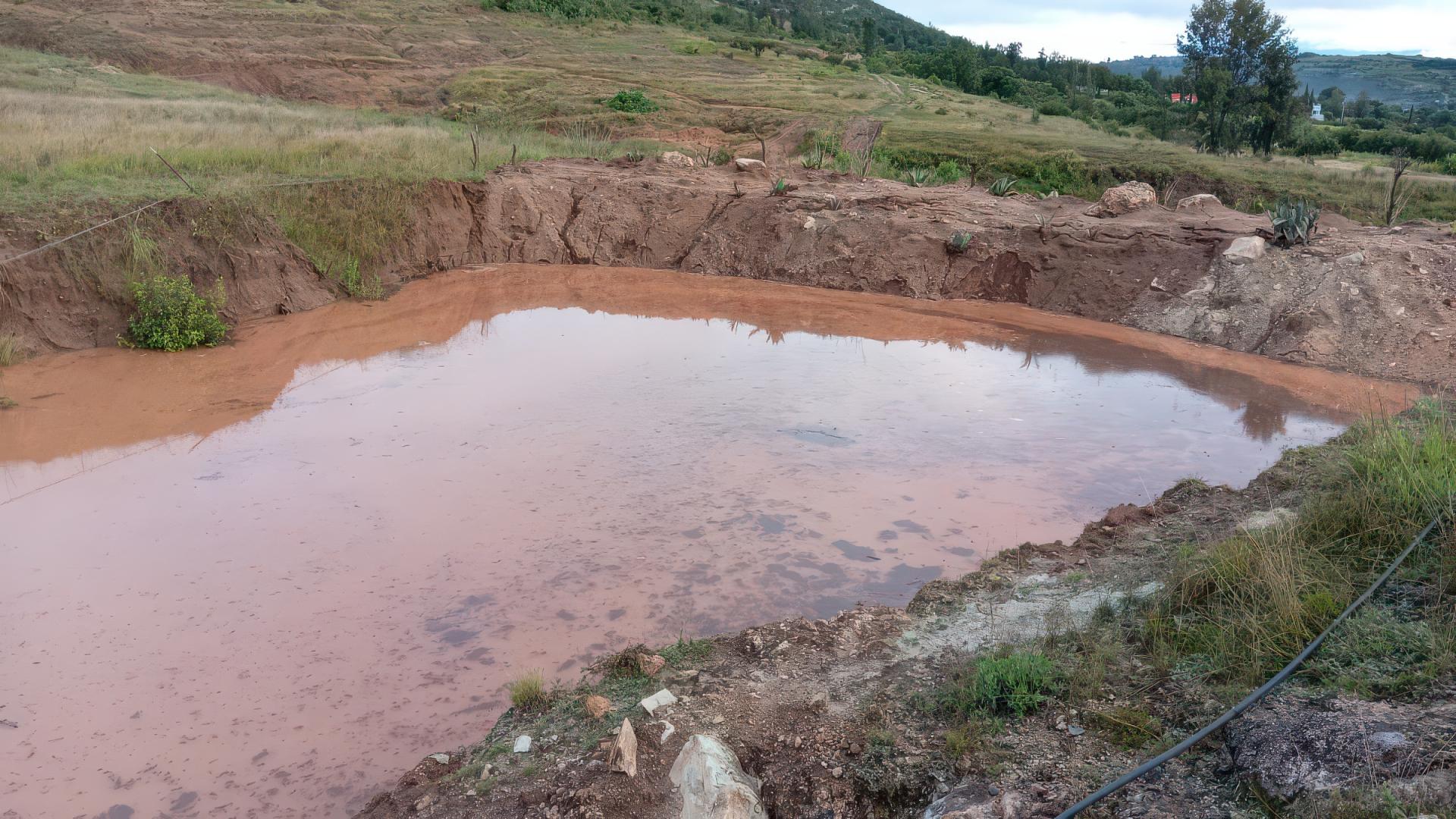
The desertification and deforestation of the hills in San Mateo Etlatongo, Oaxaca, Mexico due to climate change have caused deep erosion and fragile ravines. Over the years, community members of this Indigenous municipality have created a system of contour ditches in an attempt to retain water and restore soils; however, this has been a limited solution. The community continues to work on creating borders in a systematic and structured manner on the hills that have been identified as the most affected by soil degradation and drought under the coordination of the traditional authorities of the municipality. In 2024, Comisariado de Bienes Comunales de San Mateo Etlatongo received a Keepers of the Earth Fund grant to support the community’s efforts.
The Ñuu Savi community of San Mateo Etlatongo, known as Yucunduchi in Mixtec/ Ñuu Savi, is settled on an area of approximately 23.5 square kilometers within the Mixteca region in the state of Oaxaca, Mexico. We are proud to carry in our veins the blood of indomitable, brave, courageous, and hard-working warriors, which we inherited from our ancestors. As such, we maintain an ongoing struggle to keep our traditions and customs alive in the face of the onslaught of modernity, globalism, and policies of consumer capitalism that have impoverished our Native Peoples, belittling and discriminating against our culture, products, and native seeds while promoting the plundering and extraction of our natural resources and deforesting the world in which we live. As a consequence of the overexploitation of natural resources, the entire world has lost a considerable number of different species, now extinct due to the extermination of their natural habitat. We have deprived our next generations of the next generations of the privilege of having known them; they will only have knowledge of them through images.

The water retention edge allows water to be charged to the underlying water bodies, with a retention capacity of approximately 1600 cubic meters.
The excessive and unstoppable deforestation and the voracity with which urban expansion destroys green areas, the high and incalculable emissions of pollutants by industrial complexes that directly pollute the atmosphere, land, and water—all of this is common for most governments, which, manipulated by the economic interests of the rich, are responsible for climate change and the global warming of our planet.
Our Peoples, who previously lived in harmony with nature, are threatened by the planet overheating. This phenomenon has become noticeable in the alarming and extreme prolongation of drought. The lack of rain directly affects agricultural production and the raising of small livestock and poultry—the basis of the diet of our communities—who rely on rainfed crops and the care of livestock for self-consumption. The loss of rainfall, as well as excessive, torrential rains, cause the desertification of the soil, which is completely eroded and thus has lost all possibility of filtration to recharge the subsoil and the aquifers. This has led to the decline and extermination of springs and
small wells. Sometimes, we are left without water, forcing our people to emigrate and abandon the towns and making us easy prey to be used as cheap labor for corporate interests. To mitigate this critical situation, we are carrying out various works within our territory, combining efforts with municipal authorities, local and agrarian representatives, educational institutions, and the community at large.

Our municipality has a type of flat relief where agriculture is practiced for grains and seeds, as well as fodder for livestock. We also have a large part of rugged, hillside relief, which gives us a significant opportunity to capture the water from the scarce rains through ditches and embankments. We have had excellent results, capturing a high percentage of rainfall. This has been very beneficial in maintaining humidity in eroded areas, thus providing a greater possibility of soil regeneration through the regrowth of various shrubs, grasses, and trees. The community has planted several species from our region near these embankments.
Inside the ravines we build walls of arranged stone as our ancestors did, based on our Traditional Knowledge, to fight erosion. Little by little, the organic matter and soil carried during the rain is retained, helping us recover large areas suitable for the growth of the local flora and gradually transforming the semi-desert area into green spaces. Thus, we are able to regenerate regions that promote the recovery of wild fauna in the area while also capturing a good amount of water.
With the support and guidance of Elders from our town, and taking into account the expertise of engineers, we choose the appropriate places to construct micro-basins. We build embankments supported by heavy machinery that move and compact the material so it can withstand the pressure of the stored water, which increases infiltration into the subsoil and recharges our aquifers. In addition to the micro-basins, on the slopes of solid gravel and small rocky areas that are difficult to clear, we use a tractor to break up the surface and thus be able to plant trees and bushes. This work allows us to capture and filter water during the rains while reducing landslides and promoting maximum penetration of moisture into the gravel, which further contributes to the recovery of the plant life in our area.

The Etlatongo community also faces a problem of river pollution caused by a nearby city. The urban area of Nochixtlán discharges its sewage into this body of water that once gave life to the municipality of Etlatongo. With the discharge of wastewater, the river is no longer clear and crystalline. It is now a grey liquid that is destroying the flora and fauna of this place; it has lost its function of nourishing life. Faced with our planet’s water crisis and, above all, with the ravages that have been felt in our Indigenous communities in recent years, the people of San Mateo Etlatongo will redouble our efforts to restore our eroded lands and fight against the displacement of our Peoples, against the extinction of our native seeds due to the invasion of transgenic grains. We will also fight to preserve our customs and traditions, which have been a great cultural heritage of our ancestors.
The town of San Mateo Etlatongo is committed to the care and safeguarding of the environment. We are a People who have worked, are working, and will continue to give our maximum efforts for a healthier and cleaner environment for our future generations. We have received support from a government program to begin soil restoration and reforestation work in our most deteriorated areas. The participation of Cultural Survival via the Keepers of the Earth Fund grant has been essential in recognizing, valuing, and supporting our people in the construction of rainwater retention dams for the enrichment of aquifers for the good of life and our planet. Teamwork, including the participation of children and educational institutions at their different levels, as well as local organizations, has awakened an interest in the community in the management and improvement of our environment, promoting habits and values that will give us a more dignified future as human beings.
Top photo: Trench board to capture rainwater in areas with steep slopes, with a capacity of 16.9 cubic meters.
